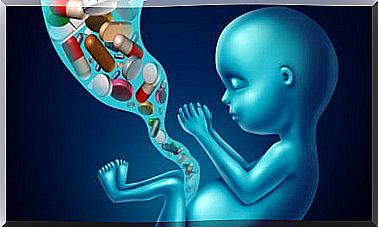What Are The Most Common Causes Of Childhood Obesity?
For years, experts have tried to establish the most common causes of childhood obesity, since the disease itself and the consequences it entails have emerged as a major public health problem in the 21st century. There are not so many geographic areas in the world that are exempt from the epidemic.
Some causes have to do with personal and family behavior towards physical activity and eating. But in recent years there has also been talk of possible environmental and genetic factors that may have their influence. In the following article we explain everything that is known about it.
Incidence and evolution of childhood obesity
Weight problems in childhood have reached pandemic levels around the world, which is why experts have come to describe it as one of the greatest public health challenges of the 21st century. It is necessary to address the issue, as it is a situation that has consequences on the physical, social and emotional health of children.
According to data published by the World Health Organization, in 2019 there were 38 million children under 5 years of age who were overweight or obese throughout the world. And the same problem affected more than 340 million children between the ages of 5 and 19 in 2016.
An added drawback is that this increasing incidence is accompanied by a higher prevalence of other diseases, such as type 2 diabetes, high blood pressure or changes in blood lipids. Problems more typical of adulthood that are beginning to be observed in minors.

The most common causes of childhood obesity
In generic terms, it is accepted that the problem appears as an energy imbalance between the calories that are consumed and those that are expended. In recent decades, there have been a series of changes in lifestyle and the type of diet that have resulted in a positive balance in favor of ingested.
In addressing the issue, we have to think of it as a multifactorial problem with different origins. Current knowledge establishes that the most common causes of childhood obesity have their origin in genetic, behavioral and environmental factors.
The influence of genetics
Genetic-related factors are one of the most studied in relation to pediatric obesity. Not surprisingly, some research shows that the BMI or body mass index (an indicator that serves to differentiate normal weight from overweight and obesity) is by inheritance between 25 and 40%.
However, this genetic influence has to be accompanied by environmental and behavioral factors for a child to develop the disease. The hereditary childhood obesity rate is estimated to be 5%.
In addition, experts have pointed out that all the variables that affect the amount of fat in the body, as well as energy intake and expenditure, are also marked by genetic factors. And not only this, but also the ability to respond to treatment. Therefore, it can be said that genetics has its importance, but it does not explain by itself the large increase in cases in recent decades.
The role of lifestyle
There are some factors related to the behavior of minors that play an important role in the development of childhood obesity. Most of them end up leading to a situation where the energy consumed is greater than what is expended. Among these aspects that have to do with lifestyle, we will discuss some of them.
1. Intake of energy drinks
Energy drinks and sodas are products that provide a large number of calories without any nutrients. In an analysis of existing studies on the subject, sufficient evidence was found to affirm that its consumption is related to the prevalence of obesity.
According to statistics, soda-related obesity may continue to increase. Consumption is expected to increase in the next 5 years by around 9.5%.
2. Consumption of ultra-processed foods
This type of already prepared and industrialized food is characterized by containing significant amounts of saturated and hydrogenated fats, a high caloric density and a high glycemic index. In addition, they are products that are presented in increasingly large portions.
All these ultra-processed traits are adverse dietary factors with a negative influence on childhood obesity. There is an association between the intake of these types of products and an increase in total energy and weight gain, both in children and adults.
3. Physical exercise and sedentary lifestyle
Children between 8 and 18 years old spend an average of 7.5 hours using various technology (consoles, mobile phones, computers) and do not participate in physical activities or active games. This lack of physical exercise and a sedentary life also contribute to obesity.

Environmental factors
This heterogeneous group of circumstances is what is known today as the obesogenic environment . It can be defined as the sum of influences that the environment, opportunities or living conditions have on the promotion of obesity in individuals or populations.
In a systematic review on the subject, three major environmental determinants have been defined:
- Facilities to practice physical exercise : such as, for example, the existence of children’s green areas or sports clubs that promote active play and sports.
- Use of public space and transport : existence of wide and safe roads for pedestrians, bicycle lanes, accessibility to public transport.
- Availability of healthy food: the sale price, the accessibility of fast food restaurants or the children’s advertising of unhealthy foods come into play here.
The most common causes of childhood obesity are varied
If what you want is to remedy this serious situation that affects millions of children in the world, changes and modifications in lifestyle are the first steps to follow. But if the environment does not stop favoring unhealthy eating and a sedentary life, it will not be possible to move towards a definitive solution.
Not only is there a responsibility of governments to favor public policies in this regard, but adults have a direct influence on the minors who are around them. It is a task for parents and caregivers that must be developed in the long term.









